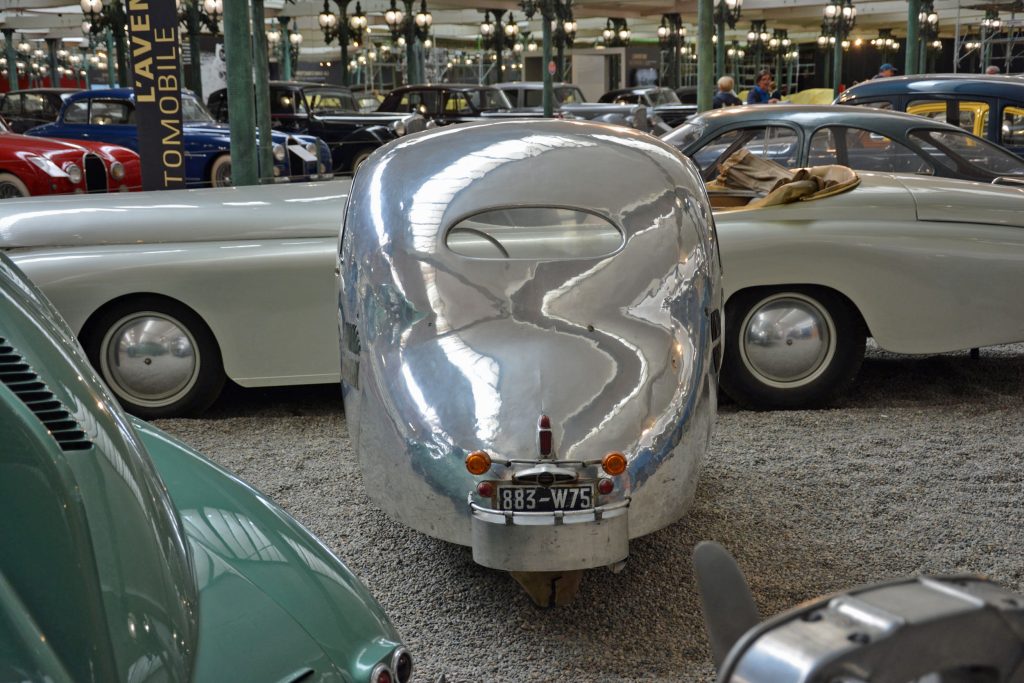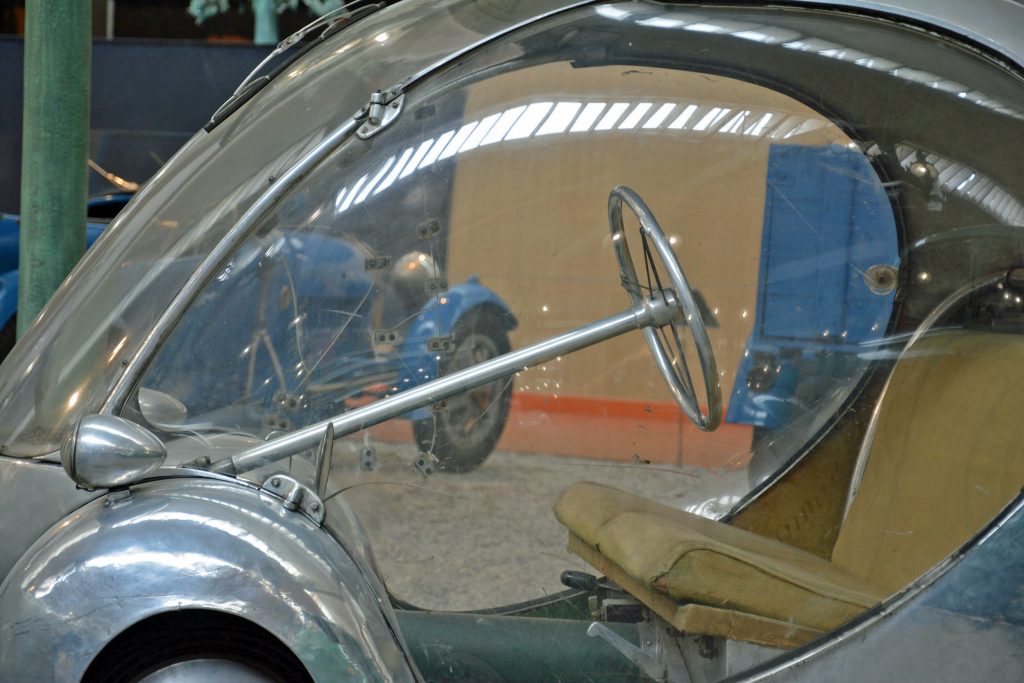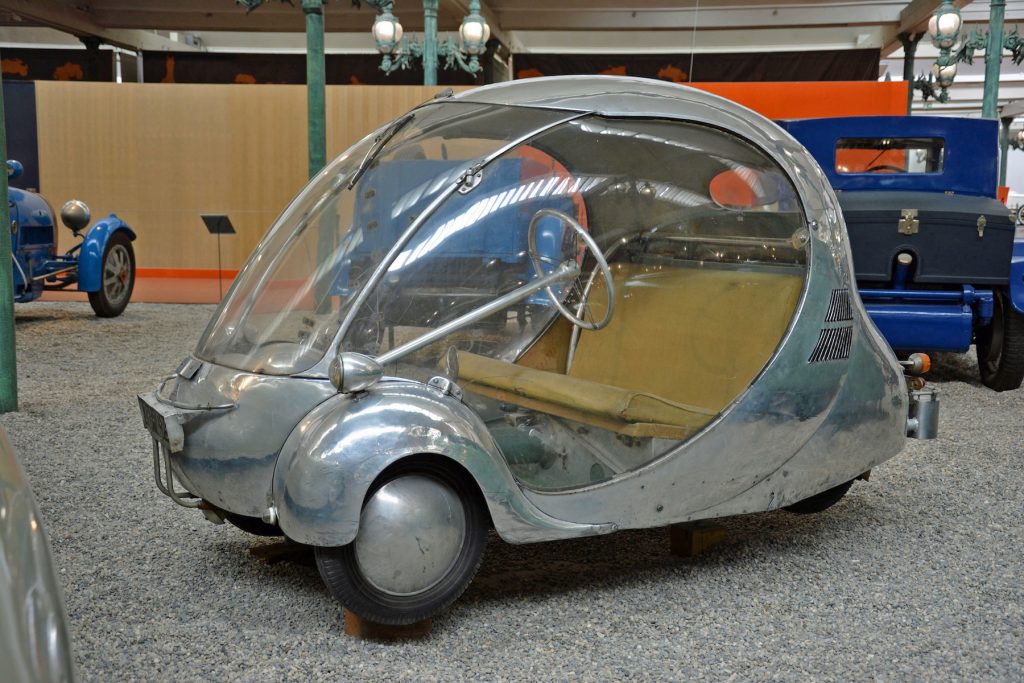The pantheon of automotive history is crowded with men and women who attempted to revolutionise the car. Some of their names are still spoken in reverential tones in 2022, while others flew under the radar. Paul Arzens falls in the latter category.
Better remembered as a forward-thinking train designer, Arzens developed and built several cars including a quirky two-seater named L’Œuf Électrique (“Electric Egg” in French) that could pass as the electric Smart ForTwo’s long-lost ancestor.

Born in Paris in 1903, Arzens initially hatched the Electric Egg to circumvent petrol rationing and shortages during World War II. He wasn’t the only engineer seeking an alternative to petrol: many were turning to wood-gas generators as a viable, last-resort power source. Period documents indicate that around 12 per cent of the 71,690 passenger cars registered in France in January 1944 were powered by a wood-gas generator. About 58 per cent of the 120,567 trucks on French roads used the system as well.

However, wood-gas generators were bulky, better suited to bigger vehicles. Arzens identified a niche market for a two-seater that would fill the gap between motorcycles and city cars. Armed with a great deal of talent and a seemingly boundless imagination, he designed a tiny, bubble car–like two-seater with three wheels, an aluminium body, Plexiglas windows, and a chassis made of Duralinox, an aluminium-magnesium alloy.
He also went to significant lengths to give the Egg a relatively elegant design, especially for a home-brewed, hand-made one-off named after something that comes out of a bird’s behind. The wings flow nicely into the body, and even the steering wheel and steering column are pleasant to look at.
The car’s main mission was to potter around traffic-dense Paris; it didn’t need to be fast, comfortable, luxurious, or offer a long driving range. Power came from an electric motor linked to five batteries packed under the seats. Arzens quoted a 60-mile range and a 45mph top speed, and he put those figures to the test by regularly driving his Egg through Paris.

There was nothing else like it in Parisian traffic and it turned every head, including that of Bugatti founder Ettore, according to the Musée National de l’Automobile in Mulhouse, France. Sadly, details about the encounter are lost.
Petrol gradually became easier to find after World War II and Arzens ditched the Egg’s electric drivetrain for a 5.5-horsepower, 125cc engine sourced from Peugeot (presumably from one of the company’s motorcycles). The swap made the Egg considerably lighter – the batteries alone weighed about 300kg – and a bit faster, with a top speed of 50 mph. The petrol-burning engine called for additional cooling fins behind the doors, but the rest of the design remained unchanged.
“One major advantage is its small size; it’s easy to park. Space in Paris is unfortunately very limited. There are roughly 240,000 parking spots on Parisian streets, so if we launch a car that’s about half the size of a standard car we can park around twice as many vehicles here,” Arzens said in a 1968 interview.

He drove the car at least semi-regularly: The various scratches, dings, and cracks in the Plexiglas suggest this wasn’t a garage queen during the first few decades of its life. Fittingly, it’s now a museum piece, on display in the grand Musée National de l’Automobile next to another Arzens-built creation that’s far more ostentatious: The Whale, which is built on a modified Buick platform.
Arzens died in 1990 and took several key details about the Egg with him. His plans for the car remain unclear: We don’t know if he wanted it to remain a one-off or if he envisioned mass production.
Had it been sold to the public, the Egg likely would have done reasonably well in the 1950s, when bubble cars like the Isetta enjoyed a favourable tailwind, but cheap, frugal cars such as the original Mini would have shortened its shelf life. We’ll never know for sure: Arzens built just one example and kept it until his death.
This article was originally published on Hagerty US.
Read more
Charging around: Electric Mini Recharged driven
The Peugeot VLV was the Twizy of the 1940s
Cars That Time Forgot: Peel Trident









